Tag Archive for: AML
Advancing Equity | Research Initiatives in AML Disparities Among Black and Latinx Populations
Advancing Equity | Research Initiatives in AML Disparities Among Black and Latinx Populations from Patient Empowerment Network on Vimeo.
What AML research efforts are underway to advance equity among Black and Latinx and populations? Expert Dr. Sara Taveras Alam from UTHealth Houston discusses initiatives that are working to improve AML care disparities.
Related Resources:

|
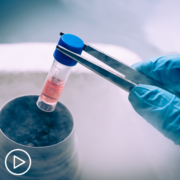
|

How Do AML Patients and Outcomes Differ by Population Groups? |
Transcript:
Lisa Hatfield:
Dr. Taveras, in your research, you examine racial and socio-economic disparities in AML outcomes. Can you speak to what research efforts are underway to further understand and address these disparities in AML diagnosis treatment and outcomes among the Black and Latin populations?
Dr. Sara Taveras Alam:
So one of the things that we have noticed is that there is an underrepresentation of minorities in clinical trials for AML, and there is an intentional poll currently to try to make these trials available to these communities. One barrier maybe if patients are not able to access clinical trials, because of the institution they’re in, so we definitely encourage patients to ask if their institutions offered clinical trials. The other thing is that we are trying to make clinical trials available in other hospitals, not just the big name academic institutions.
So there is an effort to replicate trials or expand trials to institutions where these populations may be frequenting more so than the large big name academic groups. A lot of factors contribute into the disparities, but a lot of our research efforts up until now have been focused on identifying that there is a disparity and why the disparity is there. We’re just now starting to try to figure out how to expand the access so that our minorities are included in these clinical trials and hopefully address the disparities.
Do AML Patients Receive Allo or Auto Stem Cell Transplant?
Do AML Patients Receive Allo or Auto Stem Cell Transplant? from Patient Empowerment Network on Vimeo.
What type of stem cell transplant do AML patients receive? Expert Dr. Sara Taveras Alam from UTHealth Houston explains stem cell transplant for AML care and advice to help patients locate a bone marrow donor match.
[ACT]IVATION Tip
“…encourage family members and friends to enlist on the national and international available donor registries. I believe that when a patient gets diagnosed with AML, everyone in their immediate circle wants to help, and I tend to see family members and friends offer their bone marrow for transplant purposes. The likelihood of a friend or a distant relative being a match is very low. We know that siblings may have a high chance of being a match, parents or kids may be a half-match by definition, so there’s a higher chance of some unrelated person on the registry being a match to the patient than a distant relative or friend.”
Related Resources:

|
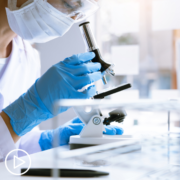
Advancing Equity | Research Initiatives in AML Disparities Among Black and Latinx Populations |

How Do AML Patients and Outcomes Differ by Population Groups? |
Transcript:
Lisa Hatfield:
When you mention a stem cell transplant, are those allogeneic stem cell transplants where they receive a donor’s stem cells, or are they the autologous where you take some of their stem cells at a certain point and then give them back to the patient?
Dr. Sara Taveras Alam:
So for patients with acute leukemia who require a stem cell transplant, it is an allogeneic stem cell transplant, so it does have to be a transplant from a matched donor, and the first pool of possible donors tend to be the patient’s siblings. If they have brothers or sisters from the same mom and dad, those are the possible first-line donors and are tested to see if they’re a match to the patient, and second to that, then the transplant institutions look into a donor registry.
So my activation tip for that question is to encourage family members and friends to enlist on the national and international available donor registries. I believe that when a patient gets diagnosed with AML, everyone in their immediate circle wants to help, and I tend to see family members and friends offer their bone marrow for transplant purposes. The likelihood of a friend or a distant relative being a match is very low.
We know that siblings may have a high chance of being a match, parents or kids may be a half-match by definition, so there’s a higher chance of some unrelated person on the registry being a match to the patient than a distant relative or friend. However, we could always pay it forward, and if we encourage our friends and family to enlist on these registries, it is very beneficial for our population.
How Can AML Patients Benefit From Shared Decision-Making?
How Can AML Patients Benefit From Shared Decision-Making? from Patient Empowerment Network on Vimeo.
How can shared decision-making benefit AML patient care? Expert Dr. Sara Taveras Alam from UTHealth Houston explains how she works to set patient expectations from diagnosis and throughout the treatment journey and patient factors that play into decision-making.
[ACT]IVATION Tip
“…patients know that they are the decision makers. The doctors are there to guide the patients to inform the patient. Definitely, there will be treatments that would not be recommended for a physician and they would not give, but generally, there’s more than one possible right answer, and the patient should be empowered to decide what fits best for their lifestyle and what accommodations need to be made.”
Related Resources:

|

Advancing Equity | Research Initiatives in AML Disparities Among Black and Latinx Populations |

How Do AML Patients and Outcomes Differ by Population Groups? |
Transcript:
Lisa Hatfield:
Dr. Taveras, how do you involve your patients and families in the shared decision-making process, both at initial diagnosis and then going forward?
Dr. Sara Taveras Alam:
From the initial diagnosis, I do try my best to explain what the life of an AML patient looks like. This can be very overwhelming and we tend to need to repeat ourselves throughout the patient-doctor relationship, most of our patients unfortunately, require a one-month-long admission initially at diagnosis, most of our patients receive diagnosis and remain in the hospital while they get their first treatment and recover from that. And that’s a very big journey to go through, and we want to make sure that the patients themselves are well-informed and their family and caregivers are well-informed of what this will mean for them as well.
Many of my patients may have children or parents or spouses that they themselves are the caregivers for and then they need to make arrangements for that while they’re going through their health process. So I believe that the decision to receive treatment is not a decision that doctors make for the patients. It’s a decision that should be made by the patient, and although most people will choose to receive treatment offers for acute myeloid leukemia, I will have some patients that may have been older and may have gone through other health issues and do not want to spend the rest of their lives in this process and that is their choice to make.
So I really do try from the very beginning to make sure I set an expectation of what life will look like with acute myeloid leukemia, and what that looks like initially is about a one month long hospitalization with chemotherapy, a lot of transfusions, monitoring for infections, and after that time period, it will have a lot of clinic visits, sometimes twice a week, and possibly re-hospitalizations for treatment depending on the treatment decided upon. We have more intensive chemotherapies or aggressive chemotherapies and lower intensity chemotherapies, that’s also a shared decision.
There may be patients who are appropriate for intensive chemotherapy in terms of their fitness or age, but may be afraid of the side effects that that could entail, and it may be appropriate for them to go with a low intensity, and that’s an option for them. So I think that ultimately, my activation tip for the question is that patients know that they are the decision makers. The doctors are there to guide the patients to inform the patient. Definitely, there will be treatments that would not be recommended for a physician and they would not give, but generally, there’s more than one possible right answer, and the patient should be empowered to decide what fits best for their lifestyle and what accommodations need to be made.
One example is, we’ve had a patient whose daughter had a sweet 16 and her re-admission was scheduled during that time, but it was really important for that patient to be with her daughter on her birthday, and we just pushed on the admission. If the patients bring up what their concerns are, we’ll do our best to accommodate as long as it’s not a risk to them.
Lisa Hatfield:
Great, thank you. And for all the patients listening, it’s nice to know that we can ask our providers if we have a special event, can this be changed, is there any chance of altering the timeline just a little bit. So thanks for that tip. We appreciate that.
Dr. Sara Taveras Alam:
You’re welcome.
AML Diagnosis Disparities | Factors Impacting Underrepresented Racial and Ethnic Groups
AML Diagnosis Disparities | Factors Impacting Underrepresented Racial and Ethnic Groups from Patient Empowerment Network on Vimeo.
What factors contribute to AML diagnosis disparities? Expert Dr. Sara Taveras Alam from UTHealth Houston discusses disparity factors in underrepresented patient groups and patient advice for newly diagnosed AML patients.
[ACT]IVATION Tip
“…I would recommend that they take notes of their conversations with their providers, that they include through their caregivers, family members, and conversations about the care, bring them to visits. There is a lot to learn in the process of an AML patient. And it is all right to ask questions again and again. It is encouraged to ask questions until their understanding of what is going on and what the plan is. Patients really are their best advocates or should be their best advocate and should never assume.”
Related Resources:
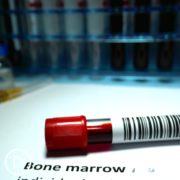
|
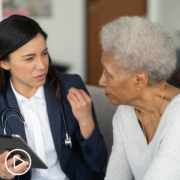
Black and Latinx AML Patients | The Impact of Cultural Beliefs |

How Do AML Patients and Outcomes Differ by Population Groups? |
Transcript:
Lisa Hatfield:
Dr. Taveras, are there differences in the stage of AML at diagnosis between underrepresented compared to other racial and ethnic groups, and if so, what factors contribute to these disparities?
Dr. Sara Taveras Alam:
So when we think of cancer stages, we usually refer to stage I through stage IV. Stage I being the cancer is localized to where it started, for example, breast, lung cancer, just in that breast, just in that lung, small and as things spread farther and farther from where they started, then you have stage II, stage III, stage IV, so for AML, it is a blood cancer, so technically, it’s all through our body, since our blood goes through the body.
There may be patients that present with no complications from their AML, and we’re assuming that they present it properly from when their diagnosis, from when their disease started. And other patients that may present with some complications from their acute myeloid leukemia already, so there the assumption is that acute myeloid leukemia has been ongoing for some time, but it is really hard to really determine when the acute myeloid leukemia started unless the patient had been undergoing very frequent blood work previously.
We do know that patients who are Black tend to present with AML at a younger age, and we’re not sure what factors contribute to that. We also know that they may be at higher risk of complications during treatment as our Hispanic patients.
We also know that their diseases may be more resistant to treatment and associated to mutations that are more aggressive. So those are the factors that contribute.
A lot goes into the treatment responses for our patients, and we want to achieve a remission and maintain a remission, and these patients require frequent healthcare visits and they may have barriers to that, depending on their work, childcare, transportation, there may be many barriers for these underrepresented patients that they themselves don’t feel as though the healthcare team needs to know about, but it is very important for us to know about these barriers so that we can do our best to address them and the patient can receive the care that will ultimately give them the best chances of survival and response to treatment.
Lisa Hatfield:
Dr. Taveras, do you have any general tips for patients who receive a diagnosis of AML?
Dr. Sara Taveras Alam:
Yeah, so for any patient with a new diagnosis of cancer and especially acute myeloid leukemia, I would recommend that they take notes of their conversations with their providers, that they include through their caregivers, family members, and conversations about the care, bring them to visits. There is a lot to learn in the process of an AML patient.
And it is all right to ask questions again and again. It is encouraged to ask questions until their understanding of what is going on and what the plan is. Patients really are their best advocates or should be their best advocate and should never assume. They should ask when they don’t know what the plan is or when they want to make sure that things are going in the right track.
How Do AML Patients and Outcomes Differ by Population Groups?
How Do AML Patients and Outcomes Differ by Population Groups? from Patient Empowerment Network on Vimeo.
How do AML genetic and molecular subtypes vary by population groups, and what are the impacts? Expert Dr. Sara Taveras Alam from UTHealth Houston discusses AML characteristics that impact some population groups and patient advice for overcoming barriers to AML care.
[ACT]IVATION Tip
“…communicate with your providers if you have any barriers to care, things like transportation, things like cost of medication may not seem to a patient as though they are important to bring up to the provider, but it is really important to bring up these barriers, as there’s things that may be done from the perspective of the hospital, perhaps they can connect you with financial assistance programs that may help with transportation, there’s different societies that can help with that, some of the pharmaceutical companies can help with that too…”
Related Resources:

|

Black and Latinx AML Patients | The Impact of Cultural Beliefs |
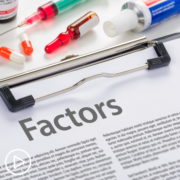
|
Transcript:
Lisa Hatfield:
Dr. Taveras, are there differences in the genetic and molecular subtypes of AML among different population groups, and how do these differences influence disease progression, response to treatment, and survival outcomes?
Dr. Sara Taveras Alam:
That is a great question. We know that in acute myeloid leukemia in general, the molecular characteristics and genetic characteristics are of prognostic and therapeutic value. We do know that Black patients have a higher risk of poor risk cytogenetics and a higher risk of not responding to treatment as well as a higher risk of complications from treatment. Some of my work actually also evaluated that Hispanic patients with comorbidities fared much worse than other populations with comorbidities.
So we always have to think about the patient as a whole and provide care that target the leukemia, but also take into consideration all of the characteristics of our patients that we’re serving. Some of our patients may have a higher difficulty accessing care or continuing care, obtaining their medication, and that too may impact their treatment outcomes.
My activation tip for this question would be to communicate with your providers if you have any barriers to care, things like transportation, things like cost of medication may not seem to a patient as though they are important to bring up to the provider, but it is really important to bring up these barriers, as there’s things that may be done from the perspective of the hospital, perhaps they can connect you with financial assistance programs that may help with transportation, there’s different societies that can help with that, some of the pharmaceutical companies can help with that too, so there are a lot of barriers to care that come from the patient socioeconomic circumstances, which is not necessarily specific to race or ethnicity, but may be associated since we know that some of our minorities will live in places where they’re below the poverty index, and if we don’t help them with these things, they might not have the best outcome.
Lisa Hatfield:
If you have a patient who does have some kind of barrier to access, whether it’s to their medications or to getting to treatment transportation, can they talk with you or the nurse, or is there a social worker at most facilities? Who would they mention that too, if they had an issue with access?
Dr. Sara Taveras Alam:
I think that the best thing is to mention it to everyone that you encounter in the healthcare system, definitely in terms the sense the social worker may take charge, connecting the patient with resources that are available. In my institution, we have a navigator that also helps connect patients to resources, but also as a provider, I’ve been in the position of sharing names and contacts of certain institutions that may be able to help the patient, I’m not sure if it’s appropriate to tell the name here, but there definitely may be things available for the patient that different members of the team may be knowledgeable about, so my recommendation would be to mention whatever barrier you have to each person that is connecting with you from your healthcare team, social worker, medical assistant, nurse, doctor. The more people you mention it to, the higher the likelihood, that it will be taken care of.
Black and Latinx AML Patients | The Impact of Cultural Beliefs
Black and Latinx AML Patients | The Impact of Cultural Beliefs from Patient Empowerment Network on Vimeo.
What impact can cultural beliefs have for Black, Latinx, and other AML patients? Expert Dr. Sara Taveras Alam from UTHealth Houston explains how experiences, cultural beliefs, and religious beliefs can impact AML care and patient advice to help inform your care provider about your viewpoint.
[ACT]IVATION Tip
“…voice your beliefs, so that your providers are aware of your goals and the barriers to care possibly and inform you better on how we can accommodate for your beliefs and improve upon the expectation that you may have from the healthcare system from previous experiences.”
Related Resources:

|

How Do AML Patients and Outcomes Differ by Population Groups? |

|
Transcript:
Lisa Hatfield:
Dr. Taveras, what impact do cultural beliefs and practices surrounding illness and treatment-seeking behaviors have on delays in AML diagnosis and disparities and treatment adherence within the Black and Latinx communities?
Dr. Sara Taveras Alam:
Thanks for this question. The experience that the patients may have had previously with the medical system, or that their family members or friends may have had previously with the medical system may impact their initial care. It may be initially that patients, of course, don’t know that this is what’s going on, and they think that they have some flu or viral infection, or does not know the severity of the situation, and especially if the personal or family experience with health care has not been positive, this may cause delays in presenting to tuition and obtaining a diagnosis. Unfortunately, we know that Black patients tend to be diagnosed with AML at an earlier age, and we know that they might not respond to treatment as well as their non-Hispanic white counterparts.
So it’s important to know this because young patients may not really foresee that they may be ill in this way and not seek care promptly. So with AML, the time to care is not necessarily going to cost progression of disease, but the patient may have complications from their disease by the time that we make the diagnosis and that can make things a little bit more challenging. Unfortunately also, Black and Latin communities can face higher complication rates from treatment, and that is something that we have seen in several clinical trials.
In the specific situation of Latin communities and well not only Latin communities, but other patients with strong religious beliefs and for Jehovah’s Witnesses specifically, this is a very challenging disease because patients who are Jehovah’s Witnesses do not accept transfusions and unfortunately we know that if the patients with acute myeloid leukemia are unable to be treated appropriately without transfusion. They may need transfusions because of their illness, and we know that with chemotherapy, unfortunately, the hemoglobin could get worse before they get better.
So it’s almost a guarantee that even if a patient with AML does not need a diagnosis, does not need a transfusion at presentation, it’s almost guaranteed that they will need a transfusion at some point during the course of their treatment. So this makes it very challenging for patients who have that religious belief and may require involving their religious leader and can cause a lot of conflict within their family members, unfortunately.
My activation tip for this question is to voice your beliefs, so that your providers are aware of your goals and the barriers to care possibly and inform you better on how we can accommodate for your beliefs and improve upon the expectation that you may have from the healthcare system from previous experiences.
How Can Bone Marrow Biopsies Be Used in AML Care?
How Can Bone Marrow Biopsies Be Used in AML Care? from Patient Empowerment Network on Vimeo.
How do AML care providers use bone marrow biopsies in patient care? Expert Dr. Sara Taveras Alam from UTHealth Houston explains how the tests are used and shares patient advice for lifestyle and dietary precautions against infections.
[ACT]IVATION Tip
“…in terms of going out in the world, I would avoid for our AML patients to be in crowded spaces, and if they are going to be in crowded spaces to use a mask so that they’re protected from respiratory infection.”
Related Resources:

Black and Latinx AML Patients | The Impact of Cultural Beliefs |

How Do AML Patients and Outcomes Differ by Population Groups? |

AML Diagnosis Disparities | Factors Impacting Underrepresented Racial and Ethnic Groups
|
Transcript:
Lisa Hatfield:
Dr. Taveras, can a bone marrow biopsy be used to monitor response to treatment in AML, and are there other tests to help monitor treatment and kind of a unique question, are there any specific dietary or lifestyle recommendations for patients undergoing a bone marrow biopsy or diagnosed with AML?
Dr. Sara Taveras Alam:
Well, the response to treatment in AML is measured with a bone marrow biopsy as the best test to assess response; however, we can have a clue into the response based on the blood test for the patient, so typically patients with acute myeloid leukemia will have anemia and thrombocytopenia, so low hemoglobin, low platelets and will likely be needing transfusions for this.
Sometimes patients with acute myeloid leukemia will have an elevated white blood cell count or low white blood cell count. Ideally, if a patient has responded to treatment, we would see the hemoglobin and platelets improving and less transfusion requirements. They might not normalize that, they would usually improve if there is response to treatment, and similarly, when it comes to the white blood cells, if the patient has responded to treatment, ideally the white blood cell count should normalize and you should not be seeing any abnormal immature blood cells in the blood work, so we should not be seeing any blasts and ideally we would be having…I’m sorry, a good number of healthy white blood cells.
So that is a surrogate marker for the bone marrow biopsy to assess response, how is the patient doing? What symptoms are they having? What is their CBC or blood count looking like? Ultimately, the bone marrow biopsy is the best test, because then we look at the place where the blood cells are being born and confirm that the blast count has been eradicated, that we see no blasts or at least less than 5 percent, which would be what we call a morphologic remission, then we do deeper assessments by sending the tests about the karyotype or chromosomes that are driving the disease and the mutations that could be driving the disease.
Ideally, if the patient has a very good response, all of those should be gone, sometimes the mutations are still there, but we’re not seeing the deceased being active, and really the bone marrow biopsy will guide the treatment to see if we’re in the right trajectory, if we can continue whatever treatment the patient is on or if we need to switch gears and treat with a different regimen to get the disease back in control.
As it relates to specific dietary or lifestyle recommendations for patients undergoing bone marrow biopsies, I wouldn’t say that there are any specific recommendations for that. On occasion, if a patient is on a blood thinner, they may be asked to stop the blood thinner for the bone marrow biopsy. Of course, that depends on what the indication for the blood thinner is. But in terms of dietary lifestyle changes, I don’t think that any change is necessary.
In terms of patients overall going through acute myeloid leukemia in terms of lifestyle recommendations, it is recommended that the patient be extra careful with infections because they are at higher risk for infection and this may mean different things at different stages of treatment and may be guided by what blood counts are looking like, specifically the neutrophils, which are the healthy white blood cells that help protect us from infections.
So patients that are neutropenic, meaning have low neutrophil count are at really high risk of infections, and we recommend for them to avoid undercooked meat or raw seafood, for example, ceviche or sushi. Any meat should be well cooked and any vegetables have to be very clean, very washed, so that we eliminate the risk of infection.
Oftentimes, I tell my patients to stick to cooked vegetables rather than raw because, unfortunately, if there is some bacteria, then the risk for our patients is much higher than the general population. Additionally, in terms of going out in the world, I would avoid for our AML patients to be in crowded spaces, and if they are going to be in crowded spaces to use a mask so that they’re protected from respiratory infection.
AML Clinical Trial Participation Disparities | Impact on Access, Outcomes, and Inclusion Strategies
AML Clinical Trial Participation Disparities | Impact on Access, Outcomes, and Inclusion Strategies from Patient Empowerment Network on Vimeo.
What are AML clinical trial disparities, outcomes, and solutions for inclusion? Expert Dr. Sara Taveras Alam from UTHealth Houston discusses patient factors that impact access, underrepresented patient groups, and patient advice for improving clinical trial access.
[ACT]IVATION Tip
“…inquire if there are clinical trials available at the institution where you’re being cared for, not all institutions do have clinical trials available, and that is okay, but you should be informed and given the opportunity to look into other facilities if clinical trials are available and have the ability to do so.”
Related Resources:
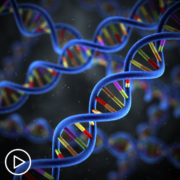
Advancements in AML Treatment | Tailoring Therapies to Individual Patients |
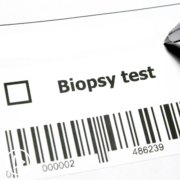
AML Diagnosis | Exploring Bone Marrow Biopsy and Alternatives |
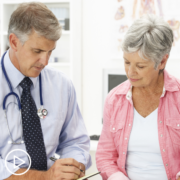
|
Transcript:
Lisa Hatfield:
Dr. Taveras, so this is kind of a three-part question regarding disparities in acute myeloid leukemia. So what are the disparities in clinical trial participation among AML patients, and how do these disparities affect access to innovative treatments and outcomes, and then kind of a third part to this question, how can efforts be made to increase diversity and inclusion and clinical trials for AML?
Dr. Sara Taveras Alam:
Thank you. This is a very important question. Unfortunately, disparities exist in the outcome of AML patients based on different factors, social-economic factors, racial factors, ethnicity, and unfortunately, it has been proven that in clinical trials, the non-Hispanic white population is the predominant population study, so unfortunately, our African Americans or Black patients and our Hispanic patients are underrepresented, and this may impact whether or not the treatments that are getting put, being studied and being utilized in AML patients are appropriate for these patients who were not included on the clinical trials.
I do see that there is an intentional effort to recruit patients from minority groups in institutions where trials are available; however, one caveat is that unfortunately, some of those underrepresented populations don’t necessarily have access to the institutions that are leading the clinical trials. I’m in Houston, and we actually have a county system here in Houston, where leukemia trials are available, and that is really a blessing, because it’s not something that is very common. So throughout my training, when I did go to a county hospital, I was able to see Hispanic patients and African American patients being given the opportunity to participate in clinical trials that may impact the long-term treatment of other patients and those treatments being studied in the population that was using them.
My activation tip for this question is to inquire if there are clinical trials available at the institution where you’re being cared for, not all institutions do have clinical trials available, and that is okay, but you should be informed and given the opportunity to look into other facilities if clinical trials are available and have the ability to do so.
How Is AML Care Impacted by Bone Marrow Biopsy Results?
How Is AML Care Impacted by Bone Marrow Biopsy Results? from Patient Empowerment Network on Vimeo.
What is the impact of bone marrow biopsy results on AML care? Expert Dr. Sara Taveras Alam from UTHealth Houston shares how test results are weighed along with patient factors to set a treatment plan and discusses additional patient monitoring, relapse, and how treatment journeys may vary.
Related Resources:

Advancements in AML Treatment | Tailoring Therapies to Individual Patients |

AML Diagnosis | Exploring Bone Marrow Biopsy and Alternatives |
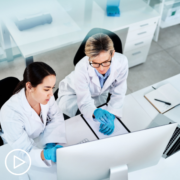
|
Transcript:
Lisa Hatfield:
Dr. Taveras, how does the information gathered from a bone marrow biopsy influence treatment decisions for AML care?
Dr. Sara Taveras Alam:
The information gathered from bone marrow biopsies is crucial to decide on the optimal treatment for our patients. We do take into consideration patient factors such as age, comorbidities, and fitness to decide on the treatment that the patient benefits from; however, they are leukemia specific factors, mainly the driving forces behind that leukemia and mutations that may prompt us to use one treatment or another, so that initial diagnostic bone marrow biopsy is crucial to get the patient started on a treatment course, and then typically, three to four weeks after starting treatment, patients would require what is called a post-induction bone marrow biopsy, so that we can assess the response to treatment, so at that second biopsy, what we’re hoping to see is a patient in a remission, whereas the initial biopsy for an AML patient may have had more than 20 percent blasts or immature cancer cells of AML.
Our goal is that at this end of induction, three to four weeks after starting chemo, the bone marrow shows less than 5 percent blasts, and then we would call that a morphologic remission. In addition, we would be obtaining the chromosome analysis and mutation testing again on those marrows after treatment, because we would love to achieve the highest response possible where we not only eliminate the bad cells, but we are eliminating the driving forces of these bad cells.
So in an ideal situation where our induction treatment does lead into a remission, AML patients still need to undergo what we call consolidation chemotherapy to maintain a remission. Unfortunately, we know that if we stop treatment, our patients with AML will relapse, and the maintenance treatments depending on the regimen, we may have a stop day at four months or six months, depending on the regimen used, and at different time points during the treatment, a bone marrow biopsy may be repeated.
I think the most crucial time for bone marrow biopsies are at the diagnosis and after induction, if we have achieved our goal to achieve remission, then the bone marrow biopsy may be repeated monthly, depending on the institution that the patient is going to.
However, that part is negotiable depending on the patient’s goals and wishes. If the patient were planned for a stem cell transplant because of the characteristics of their leukemia…if it’s a more aggressive type of acute myeloid leukemia, what we call intermediate or poor risk acute myeloid leukemia, a stem cell transplant is recommended, and before proceeding with a stem cell transplant, we must confirm that the patient continues to be in a remission, so that’s another crucial time point to repeat the bone marrow biopsy in addition to the beginning of induction, so they’re getting a diagnosis and the end of that first induction treatment.
The time points between those two are kind of negotiable, especially in patients that have a lot of trouble with the biopsies, but may be very beneficial to confirm that we are keeping the patient into remission and carry the prognosis of the patient.
Of course, if there’s any concern that there’s a relapse, that would be another reason to repeat a bone marrow biopsy, and while confirmed that there has been a relapse and see what characteristics of the AML has changed, and what treatment would be appropriate at that time frame. Once a patient has been in remission, completed their maintenance treatment potentially received a stem cell transplant if it was appropriate for them, usually patients are surveillance clinic followed up, and a bone marrow biopsy is advisable for their first few years, about every three months to confirm that we’re maintaining a remission and that no further action is needed.
AML Diagnosis | Exploring Bone Marrow Biopsy and Alternatives
AML Diagnosis | Exploring Bone Marrow Biopsy and Alternatives from Patient Empowerment Network on Vimeo.
What are the purpose and alternatives to bone marrow biopsy? Expert Dr. Sara Taveras Alam from UTHealth Houston explains what’s involved in bone marrow biopsy, what is analyzed, patient advice for the procedure, and alternative testing methods.
[ACT]IVATION Tip
“…ask the providers what to expect from the bone marrow in the facility where you are in. Usually in all facilities, lidocaine, or local anesthesia is used, but if you foresee that in general, you are anxious about procedures or susceptible to pain, you are welcome to request for some medications for pain and anxiety to help you get through that procedure, and generally, once patients have undergone a first bone marrow biopsy, they know what to expect and what accommodations may be needed for them in subsequent bone marrow biopsies.”
Related Resources:

Advancements in AML Treatment | Tailoring Therapies to Individual Patients |

|

|
Transcript:
Lisa Hatfield:
Dr. Taveras, what specific features are pathologists looking for in the bone marrow sample when diagnosing AML, and are there any alternative diagnostic methods or tests available for AML besides a bone marrow biopsy?
Dr. Sara Taveras Alam:
And that is a great question. I think that many patients may be scared of what bone marrow biopsy entails. It is a procedure after all, and it can be painful. I do know that they’re able to get some details about the diagnosis from the peripheral blood just from blood tests alone; however, the best diagnosis is performed through the bone marrow biopsy, so it can provide more information about the email, than what we’re able to obtain from the blood, sometimes the blood count, the white blood cell counts are elevated in AML and that may make it easy to do some of our testing from the blood work, but in other patients, the white blood cells may be low at presentation and that can make it very difficult to obtain any meaningful diagnostic and prognostic information without a bone marrow biopsy.
The bone marrow biopsy would also allow to tell if the patient had a preceding blood disorder like a myeloid dysplasia and this may have treatment implications. This is not something that we would be able to tell from the blood alone unfortunately, so when our pathologists look at the bone marrow sample, they are looking at some of the blood that is obtained from that boom marrow space where the blood is produced, and a tiny piece of the bone from there as well, and they’re looking at the amount of cells, especially the normal red cells, the normal white blood cells, normal platelets, and specifically the abnormal white blood cells or blasts that are quantified in a percentage fashion to diagnose the AML.
There are also different types of blasts, so they may be able to sub-classify the AML from just looking at the morphology or how these cells look under the microscope. There are many ancillary tests that are performed on the sample as well to look into the genetics for the driving forces behind the acute myeloid leukemia.
We look at a chromosome analysis to see what the chromosomes are for the leukemia. We look at mutations during FISH testing, and we do molecular testing that are looking at specific point mutations that may be associated with AML and provide insight into the treatment options as well as the prognosis, the patient’s disease, and whether or not they may benefit from a stem cell transplant to increase the chances of maintaining a remission and obtaining a cure.
My advice for patients who may be anxious about the bone marrow biopsy would be to voice their concerns for their providers. I believe that different centers have different practices as it relates to pre-medication, so some places may provide anxiety medications and pain medications in advance of the procedure, but some other facilities may not. So my activation tip for this question is to ask the providers what to expect from the bone marrow in the facility where you are in.
Usually in all facilities, lidocaine, or local anesthesia is used, but if you foresee that in general, you are anxious about procedures or susceptible to pain, you are welcome to request for some medications for pain and anxiety to help you get through that procedure, and generally, once patients have undergone a first bone marrow biopsy, they know what to expect and what accommodations may be needed for them in subsequent bone marrow biopsies.
Advancements in AML Treatment | Tailoring Therapies to Individual Patients
Advancements in AML Treatment | Tailoring Therapies to Individual Patients from Patient Empowerment Network on Vimeo.
What are the latest AML treatment advancements? Expert Dr. Sara Taveras Alam from UTHealth Houston discusses how treatments have advanced over recent years with personalized therapies beyond a one-size-fits-all approach.
[ACT]IVATION Tip
“…patients to be really informed about all of the details of their AML and ask questions about the genetic drivers of their disease and whether or not there are medications that can target those drivers. Similarly, the decision to do a stem cell transplant or not will be driven by this, so it’s very important for the patient to be informed about all of the details of their AML, not just the fact that they have acute myeloid leukemia diagnosis.”
Related Resources:

AML Diagnosis | Exploring Bone Marrow Biopsy and Alternatives |

|

|
Transcript:
Lisa Hatfield:
Dr. Taveras, what are the latest advancements and treatment modalities for AML?
Dr. Sara Taveras Alam:
Well, over the last decade, there have been many new medications approved for the treatment of AML, and this has really allowed for the treatment of acute myeloid leukemia to be individualized rather than using a one-size-fits-all approach, so typically for us to decide the treatment that best suits the patient, we take into consideration patient characteristics and into consideration, their age and their fitness level, other medical problems that they may have, and we also take into consideration characteristics of the leukemia itself, so not all acute myeloid leukemia are the same, and we try to get as much information as we can about what is driving the acute myeloid leukemia to see how we can best attack it.
One of the medication groups that we have available to us over the last decade are FLT3 inhibitors, and that is a class of medication that directly targets FLT3 mutations that may be present in patients with AML, and if the patient does have a FLT3 mutation and they’re able to be started on this class of medication, they do a lot better than they would have done, say, 20 years ago without those medications being available. Similarly, we have medications that target IDH mutations, IDH1 or 2 that are options for our patients. We have less intensive chemotherapy that is more appropriate for older patients with comorbidities, perhaps maybe more tolerable than the traditional IV intensive chemotherapy.
So my activation tip for this question is for patients to be really informed about all of the details of their AML and ask questions about the genetic drivers of their disease and whether or not there are medications that can target those drivers. Similarly, the decision to do a stem cell transplant or not will be driven by this, so it’s very important for the patient to be informed about all of the details of their AML, not just the fact that they have acute myeloid leukemia diagnosis.
Share Your Feedback About [ACT]IVATED AML
Dr. Sara Taveras Alam: Why Is It Important for You to Empower Patients?
Dr. Sara Taveras Alam: Why Is It Important for You to Empower Patients? from Patient Empowerment Network on Vimeo.
How do care providers empower patients, and why is it important? Acute myeloid leukemia expert Dr. Sara Taveras Alam from UT Health Houston shares various methods she employs to empower patients in their care, cancer journeys, and ultimate decisions about the way they want to live with cancer.
See More from Empowering Providers to Empower Patients (EPEP)
Related Resources:

|
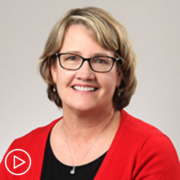
Charise Gleason: Why Is It Important for You to Empower Patients? |
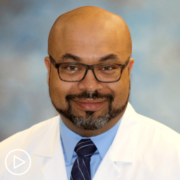
Dr. Craig Cole: Why Is It Important for You to Empower Patients? |
Transcript:
Dr. Sara Taveras Alam:
I empower my patients by explaining their disease at an elementary grade level, educating them on what to expect with treatments and keeping open lines of communication with them. I encourage my patients to share their journey with those who are close to them and to accept help. An extra set of ears may be helpful to recall conversations with physicians, and writing down questions in between visits can make sure that questions don’t go unanswered. I provide my patients with educational resources on their disease and do my best to explain the nuances of their treatment and what life with AML looks like.
I empower them to be their best advocate and ensure they know that they are the decision makers in this process, and we are here to guide and support them. Ultimately, it is their life, and they get to choose what is important to them. We should accommodate as best as we can. And sometimes that may be allowing them to postpone their next chemo cycle for a few days for a meaningful life event.
When things are rough, I empower patients by acknowledging their hardship and keeping alive the hope of cure unless that is no longer feasible. In the circumstances when controlling the disease is no longer feasible, I make every effort to accompany the patient in their concession of end of life care where there are no doubts about stones unturned, there is quality time with their loved ones, and there is peace of a life well-lived.
Combination AML Therapy for Newly Diagnosed Patients | What Are the Long-Term Effects?
Combination AML Therapy for Newly Diagnosed Patients | What Are the Long-Term Effects? from Patient Empowerment Network on Vimeo.
A Patient Empowerment Network community member wants to know the length of time that patients can stay on the combined treatment of azacitidine (Vidaza) and venetoclax (Venclexta). AML specialist Dr. Jacqueline Garcia responds, sharing an update on the long-term follow-up data for this combination treatment.
Dr. Jacqueline Garcia is an oncologist and AML researcher at the Dana-Farber Cancer Institute. Learn more about Dr. Garcia.
Related Resources:

|

|
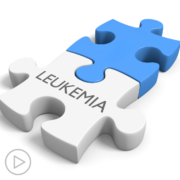
New and Emerging AML Therapies Being Studied in Clinical Trials |
Transcript:
Katherine Banwell:
Jerry had this question. “How long can patients stay on azacitidine (Vidaza) and venetoclax (Venclexta) before relapse or toxicities force them to abandon treatment?”
Dr. Jacqueline Garcia:
So, this is a good question. I would say azacitidine and venetoclax just got FDA-approved just shy of five years now, and it’s totally changed our treatment paradigm in many great ways. It was initially approved for patients that could not get intensive chemotherapies or were above 75. We call these our older patients, our more vulnerable.
And we demonstrated and compared to azacitidine alone. It was given with placebo. We saw that the combination of azacitidine and venetoclax not only was safe, well-tolerated, it led to two-and-a-half times higher complete remission rates and impressively longer survival. That’s all we care about, patients are living longer. So, one of the things that we are appreciating in 2023 now, now that we have more patients on azacitidine and venetoclax, is that we have many patients that are long-term responders.
So, in the original clinical trial we’ve been reported – and we just submitted the update for the long-term follow-up that we presented at the American Society of Hematology meeting in 2022, in December.
We presented the long-term follow-up data that shows that responses can be durable and even as long as two years or three years in some patients. The average amount of time the patients are on therapy is somewhere between one-and-a-half to two years. But not every patient performs like an average patient.
We have some that respond for less time. We have some that respond for a longer time. So, I definitely have a few patients that have been on combination therapy, and we’ve gone to year three, then four, and two that got to year five. And that was using the original indication of older the 75, no intensive chemotherapy. Most of those patients in the original trial and led to the approval were not transplant candidates. But once those drugs got approved, more patients that were older started getting this therapy.
And so, the durability of this treatment might be longer for people that don’t have competing health problems and for specific mutation subtypes. There are a couple of mutation subtypes that include IDH2 and NPM1, where we’ve seen some extreme long-term responders.
And then, there are others that are much shorter. So, I would say it’s very individual. In terms of toxicities in general, the regimens very well-tolerated. And if it’s not, often it’s because there should be supportive care, prophylaxis, and adjustments to the dosing strategy, which has been well-published. Sometimes, if you have a treating oncologist that is less familiar, they won’t know the nuances of how to adjust the doses, so I would ask your local oncologist to reach out to anybody that was part of the original trials. Often, a lot of us are very responsive to helping out our colleagues to help patients to stay on treatment.
But at the end of the day, if a patient loses response or has a bad toxicity that makes it very difficult, we have to move on to another therapy.



